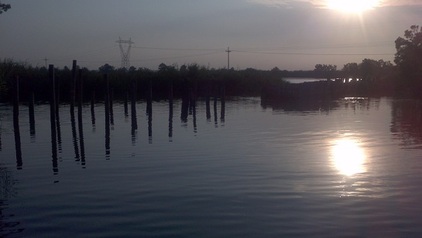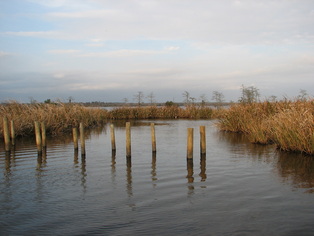Can't Find fish? The marsh bass are there!

Keith Lusher Jr
It’s about that time! The long hot days of summer are here
and anglers are struggling on the warm waters of the Northshore. What was a
tough speckled trout month last month has turned even tougher. The salinity levels in Lake Pontchartrain
show no improvement and the forecast doesn’t look to improve in the near
future. Bass fisherman aren’t faring any
better these days as reports of anglers struggling dominate the conversation at
local bait shops and tackle stores. It’s around this time that I like to specifically target the
marshes near the lake for marsh bass. So
what is a marsh bass? Genetically
speaking, marsh bass are the same as any other largemouth bass you might catch
up-river or in any other freshwater tributary, but because of the surrounding
environment, this type of bass has taken on some very distinct characteristics.
One glaringly obvious difference is the girth of a marsh bass. Marsh bass are smaller and stockier than bass
that live in pure freshwater. It has been proven that largemouth bass that live
in pure freshwater grow quicker. This would explain why marsh bass are
typically shorter. The salinity of the water in which these fish live is
approximately 2 parts per thousand. So why are they thicker than the average freshwater
bass? In a recent study, Scientists with Louisiana Fisheries and Sea Grant
examined the stomach contents of the bass that lived in freshwater and they showed
a high percentage of invertebrates compared to the typical diet of marsh bass. The
most common fish eaten were cacohoes, shiners, and pogies. Fish are by far a
superior food item as opposed to invertebrates for producing growth in predator
fish such as largemouth bass. This explains why these bass are referred to by
local fisherman as “football shaped.” These fish have some serious meat on them
and are perfect for those who are looking to put some meat in the freezer. Below are some hot-spots and tips that you can
use to have a successful bass fishing trip this month.
Salt Bayou
|
Bass fishing is hot right now on Salt Bayou! Look for small
ditches or run-outs coming out of the marsh. On a falling tide the water
flowing out these ditches contain small shrimp and shad that are ambushed by
bass waiting underneath the grass line. Use weed-less baits resembling shad and
cast over the grass line that is located along the bank. The bass will usually
strike after the lure has cleared the vegetation. Another sign to look for is
bait fish. Shad scattering along the surface is a good sign that there are bass
in the area. When these bass start chasing shad they are already primed and in
a frenzy. Make quick cast where you see explosions on the water. Remember to
make the most out of what little time you have to put some fish in the boat
because usually around 8:00 am the bite slows down. Getting out on the water a
half hour earlier can mean an extra five or six bass in your boat.
|
Tchefuncte River
|
Located less than a mile from Lake Pontchartrain, the Rice
Fields Canal is a place you really need to try this month. Surface action in this canal is quite a sight
to witness. The main canal offers over 10 different run-outs that act like
marsh bass magnets! Anchor on the opposite side of these ditches and work the
mouth with top water lures early in the morning. Artificial shad lures such as
Tsunami and Matrix Shad work best. Keep
an eye out for shrimp popping on the surface. I find switching over to an artificial
shrimp under rigged under a cork works best. Pop the cork often and try not to let the
shrimp sit still too long. Bass like live bait and every time you pop the cork
that shrimp comes to life!
|
More Articles!
Bass fishing makes summertime transition on Northhsore!
Lake Pontchartrain speckled trout may be in survival mode.
Beat the crowds, find less stressed waters!
Speckled trout season off to slow start on Northshore
Got your backup plan?
Finally some stability on the Northshore!
|
|

